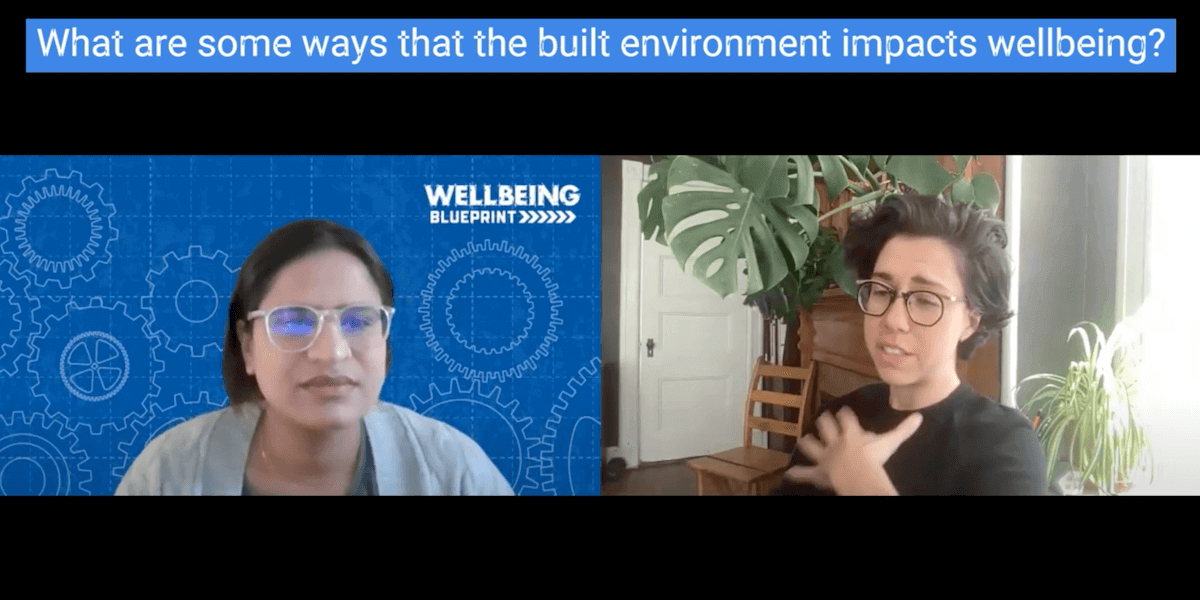Please fill out the following fields to get your copy of this Wellbeing Blueprint resource:
Please fill out the following fields to get your copy of this Wellbeing Blueprint resource:


Elka Gotfryd, Executive Director of the Center for Housing Solutions and Community Initiatives at Hudson Valley Pattern for Progress, shares about the intersection of the built environment, land use and wellbeing.
The way I like to think about this is the same way I like to think about wellbeing on an individual level, where you’ve got your physical health, the emotional health and your psychological health. All of these elements of health and wellbeing are intertwined with one another. So if you are feeling any sort of mental stress or any sort of emotional stress, your body may feel that physically. And if you’re feeling physically unwell, that may impact your mood or your psychological wellbeing. The way I see it is that that fundamental principle of the emotional, physical, and even spiritual wellbeing, is magnified on a societal scale when it comes to our cities and towns. As a planner, when I look at the wellbeing of a neighborhood or a community that I’m working with, I make sure that I’m focusing not only on the physical aspects of our environment, but also the emotional and psychological — what people are sharing with me and what they’re telling me about their experience in that built environment.
That’s a really good question, and one that I try to answer all the time in my practice as a planner. As a highly technical field, planning actually needs to transition to be much more human-centric. Planners need to be more aware of the emotional impacts of the decision-making that happens in the built environment. And we as planners also need to understand, psychologically speaking, when people resist change in their neighborhoods. For example, there’s this concept of “not in my backyard” or NIMBYism, which is an emotional response to change.
Planners all over the country are now working towards reparations through land use planning. For example, in Evanston, Illinois, in response to the historic urban renewal that happened there. One of the council members introduced an initiative to use municipal land for reparations for those communities who were displaced by historically discriminatory land use policies that were perpetuated by the federal and state governments at the time. This is one way that planners can advocate to right the wrongs that have been historically done through planning and land use.
Every field of work is going to run into planning in one way or another, because we’re all operating in the built environment. We’re all operating in a community or a neighborhood, or a city or town. Wherever it is, we’re operating in space.
Let’s take the example of health institutions. Some hospitals and health insurance companies are starting to understand that it’s more financially viable to invest in housing for someone, than ER visits for someone who is experiencing homelessness. Therefore, to enable the kind of housing and wellbeing outcomes that come with a Housing First approach, health and equity advocates should be pounding on the doors of planners and the land use board members to encourage the type of density that would be necessary in order to ensure that everyone has access to safe and safe and stable housing.
There was a story of a woman who had a regular check up at a hospital every day at 3 o’clock for an extended period of time, and when her treatments were over she would start to get panic panic attacks around 3:30 every day. She would call an ambulance, and they’d rush her to the hospital, and then she’d be fine. Nothing was wrong with her physically, but what they realized with that she was lonely. She was so used to coming in and being able to socialize. She was so lonely in that moment that she called an ambulance and wanted to go have that exchange at the hospital. I think about that in the context of the built environment and how we relate to our senior population as they age, historically staying in their single-family homes, without options for them to downsize or move into intergenerational communities. Their wellbeing is affected in a very negative way, due to the way that we’ve built out the built environment. And then the domino effect is that our healthcare systems are are impacted by this. It’s all intertwined.
Sign on to the Blueprint today to connect with a national network of leaders who are taking action across a variety of issue areas and sectors to advance wellbeing and justice for all.